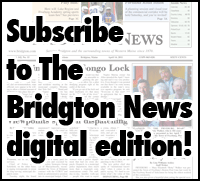Corrigan: Atop the cliff
By Mike Corrigan
BN Columnist
Many recent tourists in Washington, D.C. are surprised to find that the fiscal cliff is not only real, it’s tangible.
The cliff, situated between the White House and the Capitol and closer to the latter, drops off sheer from about 350 feet at its highest; it slopes upward to the sheer face from a gentle ramp starting just east of the White House lawn.
A man named Harvey Frill, noticing that neither the Congress nor the White House was taking ownership of the cliff, saw an opportunity for the kind of old-fashioned entrepreneurship the government is always talking about, but does so little to boost. His company, Serving the People Enlarges the National Debt (SPEND), offers tours of the new landmark. Interest is high, Frill said; but then, so is debt. “I can’t lose, really,†he said.
In three weeks, SPEND has grossed $14 million dollars; Frill has built stairs and paths up the slope side, has installed three high-speed elevators up the cliff side, has leased out a gondola concession (run by the National Park Service), and most recently completed a four-million dollar funicular tramway to the top. If Jan. 1 comes with little progress, his company may do a public stock offering.
“Didn’t you have trouble getting the permits?†I asked Frill on a visit last week.
“Are you kidding? The government is in complete denial about this place. And the contractors all were looking for work. I built most of it in three days. I’ve already repaid the bank loans and it’s been all profit for the last several days,†he said.
Crowds of hundreds this cold and cloudy day were pressing up to the railings at the cliff edge.
“Why is business so strong here at the fiscal cliff?†I said.
“Lots of free advertising; we’re all over the television and newspapers,†Frill said. “Plus, there’s the pride factor.â€
I must have looked quizzical.
“This cliff belongs to the American people,†Frill told me. “We all built it, we all paid for it, we’re all in debt for it. It’s the most massive structure in Washington, a symbol of this great nation’s wealth and majesty. The least we can do is enjoy it while it’s here.â€
He spread his hands wide and swept them over the scene. “Just look at this view!†he said.
“It’s not as tall as the Washington Monument,†I observed.
“Not yet,†shrugged Frill. “But this is the people’s monument.â€
“What happens to your company if the fiscal cliff is averted?†I asked.
Frill laughed. “Easy come, easy go,†he said. But he stamped his foot on the cliff edge. “It’s so solid. I’m pretty sure it’s going to be here awhile. In fact, I’ll bet you next year at this time, business will be booming up here again.â€
I asked Willard Frump of Grand Rapids, Mich. why he shelled out twenty bucks to visit the fiscal cliff.
“The fiscal cliff is something we can all be proud of,†Frump said. “Look at me. I couldn’t even afford to keep my small house, once the economy went bad. But, I own a piece of this magnificent structure! It’s Americana, that’s what it is.â€
“It just assures me that I’m not in all this trouble alone,†added Eleanor Fringe of South Carolina. “The massiveness of the thing is kind of calming. You know it’s never really going away. When mankind is but a distant memory and this city is overtaken by weeds, the fiscal cliff will still stand here, towering impassively above it all.â€


